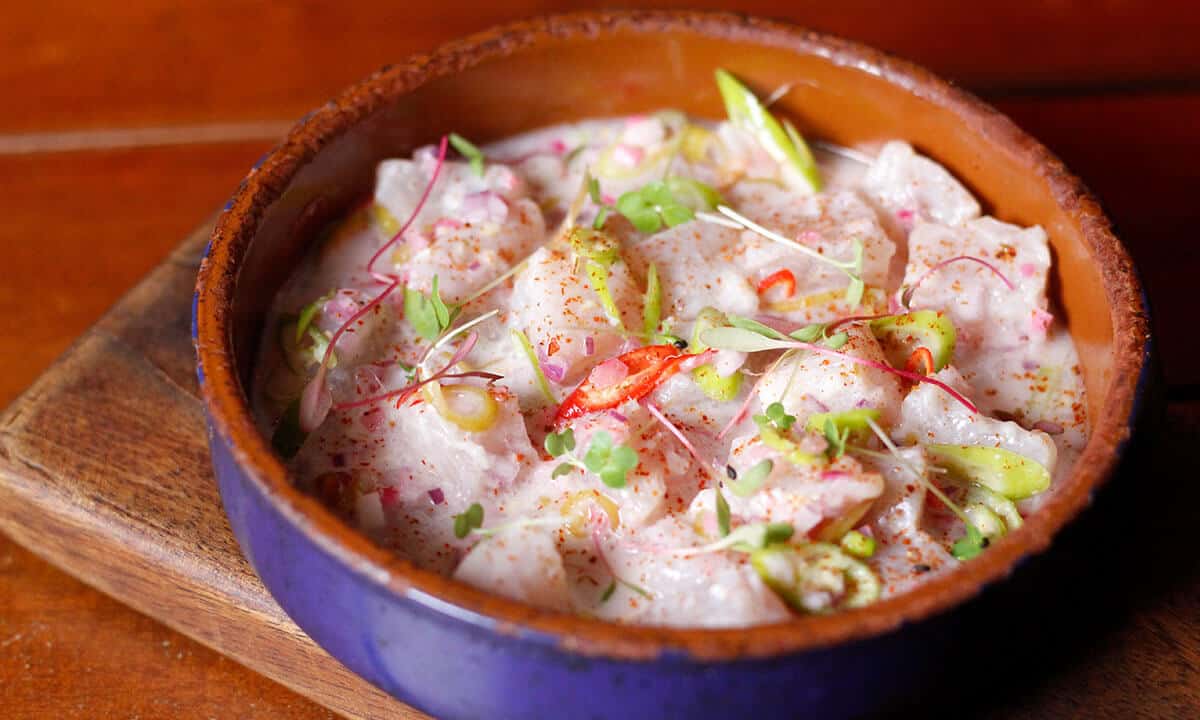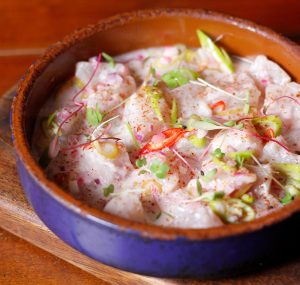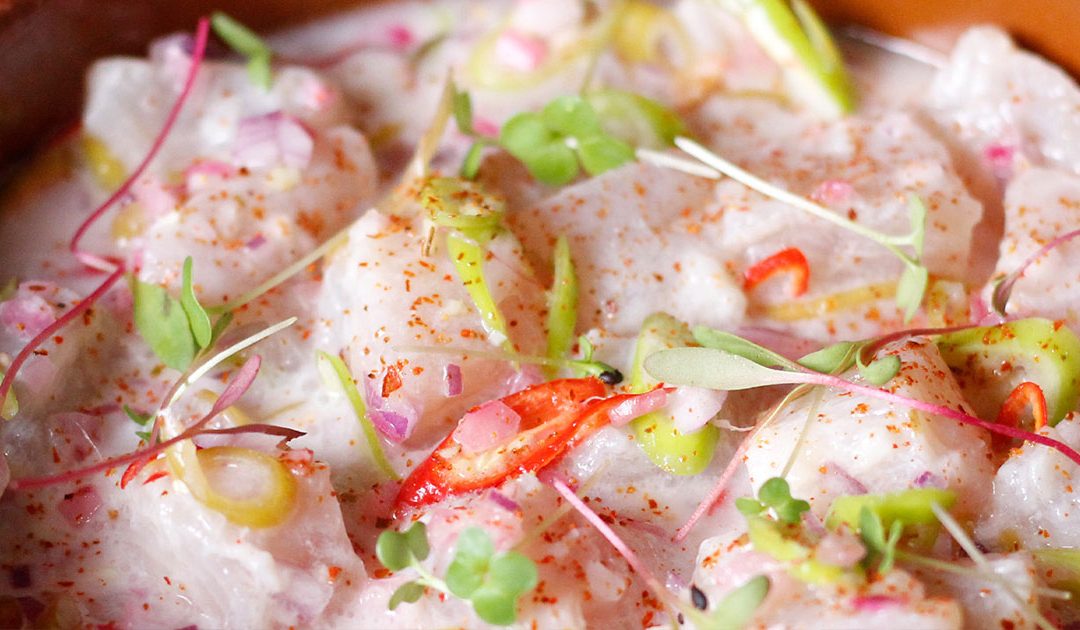

Kinilaw na Tanigue dish shot, contributed by Mikel Zaguirre of Locavore.
The easiest way to describe kinilaw to the unacquainted is to compare it with the more widely known ceviche. They’re like long-lost cousins: one Filipino, the other Peruvian. Both use raw fish and a souring agent. Both add garnishes like chili or onions. Both have origins that can be traced back to thousands of years. Both have resulted in modern iterations influenced by Spanish colonization.
But to use kinilaw and ceviche interchangeably isn’t quite fair either. Both dishes have distinct histories and identities.
Research has shown that kinilaw predates the colonial Philippines. Edilberto N. Alegre and Doreen Fernandez, in their Kinilaw: A Philippine Cuisine of Freshness, wrote that it may be over a thousand years old after the 1987 Butuan Balangay dig unearthed tabon-tabon halves with fish bones that hinted at an archaic version of the dish. Tabon-tabon is a popular fruit in Northern Mindanao, whose juice extract is commonly used in regional kinilaw recipes.
…to use kinilaw and ceviche interchangeably isn’t quite fair either. Both dishes have distinct histories and identities.
Moreover, dictionaries issued by the Spaniards when they first arrived in the Philippines referenced similar-sounding food items. Unlike ceviche, which uses citrus fruits as souring agents, traditional kinilaw uses vinegar, which cooks the fish even without heat. Kinilaw’s employment of vinegar as a marinade also predates the custom of marinating ceviche, which began in the 1970s.
Like most dishes, kinilaw has not been immune from the pull of personalization. Many chefs have laid their hands on this traditional dish, brandishing it with their signature flair. Here is an example of a recipe that does both—harkening back to tradition while looking towards innovation. Kinilaw has had a long and intriguing past, but there is no doubt that it will continue to evolve and represent the Philippines in the future.
Kinilaw Recipe
CONTRIBUTED BY MIKEL ZAGUIRRE OF LOCAVORE
Ingredients
1/2 Cup tanigue or Pacific mackerel, deboned, cubed, and skinned
1/2 Cup kinilaw vinegar (see recipe below)
1/4 Cup coconut milk, first press
1 tbsp red onion, chopped
1 tsp green chili, chopped
1 tsp red chili, chopped
To Taste salt and pepper
KINILAW VINEGAR
1 cup white vinegar
1/4 cup calamansi juice
3/4 cup white sugar
2 tbsp salt
1 tspred chili, chopped
1 tsp green chili, chopped
3 tbsp red onion, chopped
2 tbsp ginger, grated
Procedure
MAKE THE VINEGAR
1. Make the kinilaw vinegar by combining all the ingredients together. Mix until the salt and sugar dissolve completely. Store in the chiller until use.
NOTE: The longer the vinegar rests, the more pronounced the flavor becomes.
COMBINE INGREDIENTS
2. Combine the cubed tanigue with flavoured vinegar. Marinate for at least 15 minutes in the chiller.
3. Season the marinated tanigue to taste.
4. Add coconut milk to marinated tanigue.
PLATE AND SERVE
5. Plate in a shallow container. Top with the rest of the ingredients.
6. Serve cold.


Recent Comments